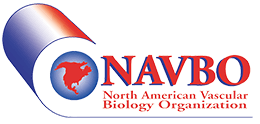
Cardiovascular mechanics and extracellular vesicles
January 10, 2019
JOSHUA D. HUTCHESON, PH.D.
Assistant Professor
Biomedical Engineering
Florida International University
January 10, 2019 at 1:00pm EST
This webinar is being sponsored by: The University of Toronto and the Ted Rogers Centre for Heart Research


JOSHUA D. HUTCHESON -
Dr. Joshua Hutcheson joined the Department of Biomedical Engineering at Florida International University (FIU) in August 2016. He is also an active member of the Biomolecular Science Institute at FIU. Prior to joining FIU, Dr. Hutcheson worked as a research fellow at Brigham and Women’s Hospital and Harvard Medical School within the Center for Interdisciplinary Cardiovascular Sciences. Dr. Hutcheson is passionate about teaching and researching the mechanisms of cardiovascular tissue maintenance and remodeling. His research focuses on the mechanical and molecular contributors to vascular calcification and aortic valve disease, and he is working on developing non-invasive techniques to diagnose and treat these pathologies. Outside of the lab and classroom, Dr. Hutcheson enjoys spending time with his wife and his 1-year old daughter.
PRESENTATION -
The study presented will discuss the role of vascular smooth muscle cell (SMC) mechanics and mechanotransduction in the formation of calcifying extracellular vesicles (EVs), which nucleate mineral in the vascular wall. Vascular calcification is the leading predictor of cardiovascular morbidity and mortality and directly contributes to atherosclerotic plaque ruptures that cause heart attacks and strokes. No therapeutic strategies exist for vascular calcification, and knowledge gaps remain in EV formation mechanisms. Our mechanistic analyses of calcifying EVs in previous studies showed that EV formation required the presence of caveolin-1, a component of small plasma membrane invaginations known as caveolae. Endocytosis of caveolae recruits proteins required for calcification into vesicles that are subsequently released as calcifying EVs. Endocytosis requires constriction of plasma membrane invaginations. Tensegrity models of cell structure predict that cell contraction leads to increased compressive forces, and mesenchymal stem cells require elevated contractility to form calcific mineral in culture. We hypothesize that compression leads to constriction and internalization of caveolae domains and the initiation of calcifying EV formation. Tensegrity models balance contractile elements within a cell with elements that resist compression and the reaction force from the extracellular matrix, possibly providing a broader mechanistic explanation for calcification. As compressive forces increase, SMCs may counteract these forces by increasing the modulus of the extracellular matrix through calcifying EV and subsequent extracellular mineralization. This cell mechanics to mechanotransduction to extracellular mechanics feedback could provide new insight into mediators of vascular calcification.
Articles of interest that relate to this presentation are:
Sortilin mediates vascular calcification via its recruitment into extracellular vesicles
https://www.ncbi.nlm.nih.gov/pubmed/26950419
Genesis and growth of extracellular-vesicle-derived microcalcification in atherosclerotic plaques
https://www.ncbi.nlm.nih.gov/pubmed/26752654
